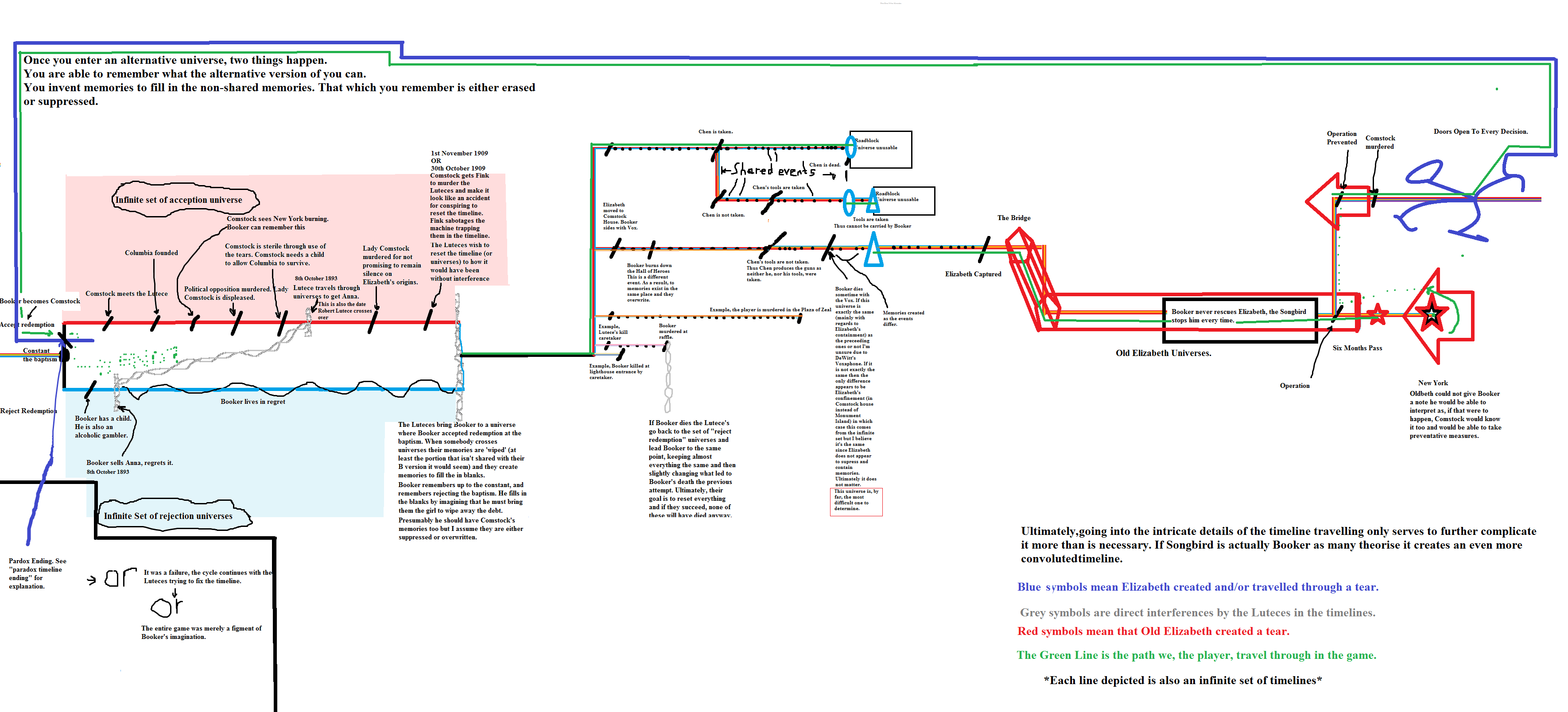I read the suggestion that you've implying (I don't know if it was the same user, if it was in the previous spoiler thread or where, sorry to whoever did it), that the Comstock House contains people that were affected by the tears but I would agree in it seeming likely. In fact, if Comstock opened up the amount of tears he seemed to, a large amount of people could potentially be affected depending on who is nearby, he himself unaffected because he and the Luteces are using the machine to peer inside which could explain the size of the facility.
I concur with the Voxophone but I think (I don't know if I misinterpretted the question originally) was that if there were an infinite number of Luteces, which there are, why don't they experience cognitive dissonance when they're all scattered among the probability space and they all occupy the same 'place' (although it's not really a 'place' I guess). P.S. Actually, thinking about it, if they're all scattered, it doesn't mean that they can enter all areas, they're confined to a certain set of probabilities which, as you've mentioned, they could then alter. I think that could account for it. It seems kind of irrelevant anyway since it's never directly stated and the Voxophone you've quoted is 'meant' to be the answer. The bolded seems to be absolutely correct.
Anyway, as for the edit, you actually can resort to time travel dialogue as opposed to speaking of it in terms of parallel universes since Elizabeth drowns Booker in every universe.
This, really is, the most concise, and simplest explanation:
EDIT:
Kind of an easy explanation for this one (but I don't know how well I've worded it), time is relative to the timeline. So past, present, and future, are all occuring simultaneously in different timelines. She can go to the future and past by opening a tear/going to a timeline where time is behind/ahead of our own (for example, going to Paris when Revenge of the Jedi is showing). So, in each universe, time goes forward, but what point in time each universe is in is different.



